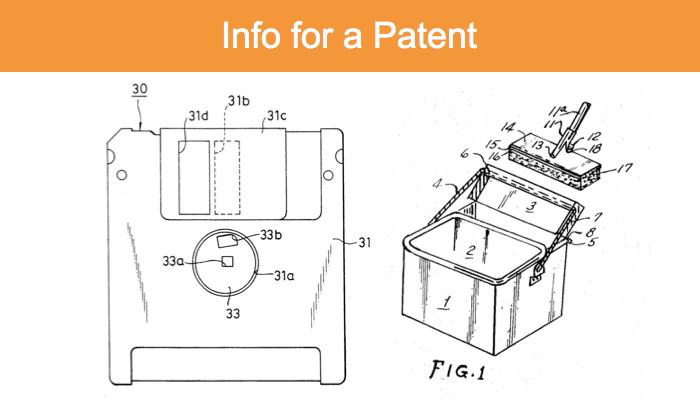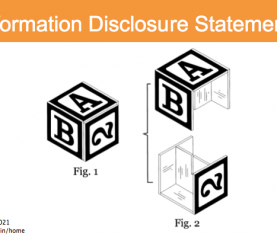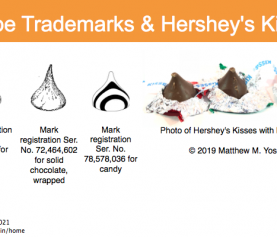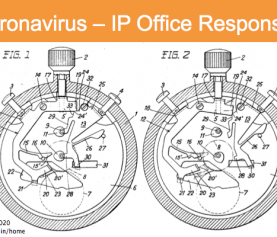What information is needed for a patent application?
Inventors and entrepreneurs usually ask: what information is needed for a patent application? The shortest answer is “a bunch!” Call me at 617-340-9295 or email me at my Contact Me page if you have questions about the info you need for a patent application. In this post, I’ll present what information I need from you for a patent application, and why I need it. If you need to file a provisional patent application in an emergency, or are following the staged provisional patent application strategy I describe in this post, we may postpone gathering some of the details of the invention.
What information is needed for a patent application?
These are the categories of information needed for a patent application or provisional patent application:
- Inventors
- Patent ownership
- How and when the invention was developed
- Status of the invention
- What the invention is
- How the invention is different from everything related
The inventors
For each inventor, you’ll need to provide:
- full names,
- city, state, and country where each lives, and
- each inventor’s citizenship.
This information is needed for a patent application because every patent application must identify the inventors, and we need to confirm you’re eligible to file a US patent application (or other). Who are the inventors? Read more in this post.
If you want to see if you qualify for micro entity status (see this post on micro entity status), I’ll need to know, for each inventor:
- Was that person’s annual income over last year’s limit?
- Has that person been an inventor on four or fewer non-provisional patent applications?
This information is needed for a patent application to see if we can file with micro entity status.
The patent owner
I need to know if the inventors are going to jointly own the patent as individuals, or if there is a company – such as an employer – that will own the patent.
- If so, I need information on the company.
- If not, I need to know what companies, if any, the inventors work for, for conflicts checking, and which companies, if any, they worked for at the time they made the invention.
This information is needed for a patent application because a patent application must identify the owner of the patent application and any patents that issue from it.
If the invention will be owned by a company:
- Is the company a non-profit?
- Is the company an educational institution?
- Does the company have more than 500 employees?
- Did the inventors develop the invention as part of their jobs?
- What were their job responsibilities?
- What contracts have the inventors signed with the company? Employment agreements, patent assignment agreements, severance agreements, non-compete agreements?
- Did independent contractors contribute to the invention?
This information is needed for a patent application because this will determine whether the company can file as a small entity or a large entity, which has a big effect on USPTO fees. This also will indicate whether the company has properly controlled and gotten assignments of the rights to the invention.
Development of the invention
I need to know about how and when the invention was made.
- When did the inventor(s) come up with the idea?
- Provide copies of any notebook or journal entries that prove that date of invention.
- When was the invention first built, made, or used?
- Provide copies of any notebook or journal entries that prove that date, referred to in patentese as “reduction to practice“.
This information is needed for a patent application because there are time limits and deadlines involved, and I need to assess how long you have to file a patent application or provisional patent application.
The status of the invention
I need to know what has been done with the invention, and where you would like it protected.
- Have you told anyone about the invention? Who, and when?
- If you work for a company, have you told colleagues there?
- Who have you shown the invention to, beyond simply mentioning the concept?
- Is the invention being used? Sold? Offered for sale? Has it previously been used, sold, or offered for sale?
- Have you published a description of your invention anywhere, in any form?
- Is your invention patented, or have you applied for a patent application, anywhere in the world?
- In which, if any, countries other than the US do you want to patent the invention?
This information is needed for a patent application because there are time limits that start with public disclosure, use, sale, or offer for sale of any invention. Some countries do not allow any patents after an invention has been disclosed. Depending on what countries you’re considering, a PCT application may make sense.
Details of the invention
I need the full scope of the invention.
- Name you’ve given the invention
- What problem does your invention solve?
- Brief description of the invention
- How can the invention be used in other ways, or to solve other problems
- Drawings of the invention (multiple views, diagrams, schematics, flowcharts, etc.) with descriptions
- What parts of the invention are necessary? Which are optional? How can the order or arrangement be changed?
- Was any US government agency involved in developing or paying for the invention?
This information is needed for a patent application because I need a full disclosure of the invention in order to write a full non-provisional patent application. I need to know how a competitor might work around your invention, so that we can try to write the patent application to prevent that.
Depending on the patent application strategy that makes sense for you, we may want to file a patent application with less than all of this information. For instance, if we are filing in an emergency (if someone one your team made an inadvertent public disclosure, or a public presentation is coming up, or a sale or use was made almost a year ago), we may file a provisional patent application with less than full details of the invention.
Details of prior art
I need to know what else exists that is already known and is related to this invention, and the problem(s) it solves – in patent terminology, the “prior art.”
- How have others tried to solve the problem or problems your invention solves?
- Provide copies of articles, patents, or websites demonstrating that.
- What are the shortcomings with the solutions others have tried?
- Describe in detail the most important differences between your invention and the prior art.
- Are there similar inventions or patents?
This information is needed for a patent application so that we can describe how your invention is different and better.
That seems like a large amount of information.
It sure is! But that’s what’s needed to write a patent application. Do you have questions? I’d be glad to hear from you in the comments. Call me at 617-340-9295 or email me at my Contact Me page. Or, find me on Facebook, Twitter, Google+, LinkedIn, Google Local, or Avvo.







[…] Patent Application Basics. If you’re preparing to file, take a look at my post on what information is needed for any patent application. For details on relevant PCT deadlines, read […]